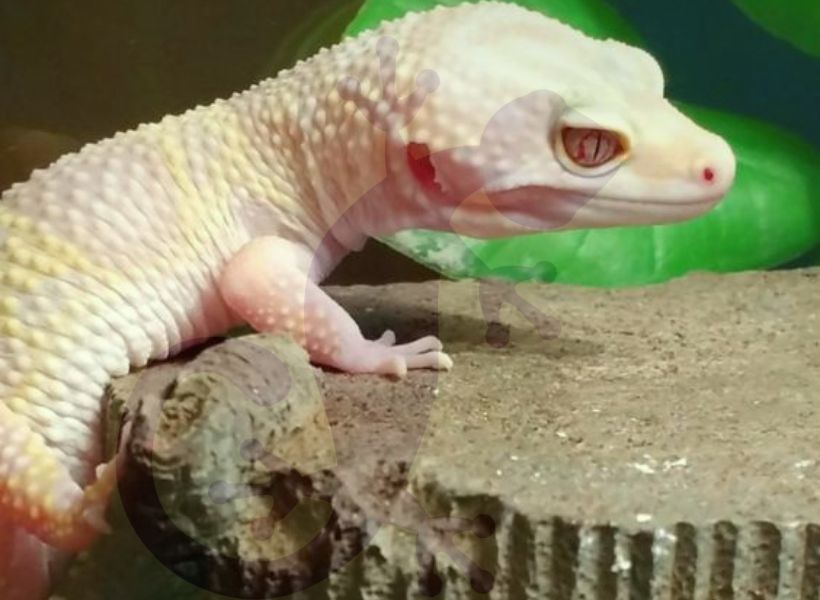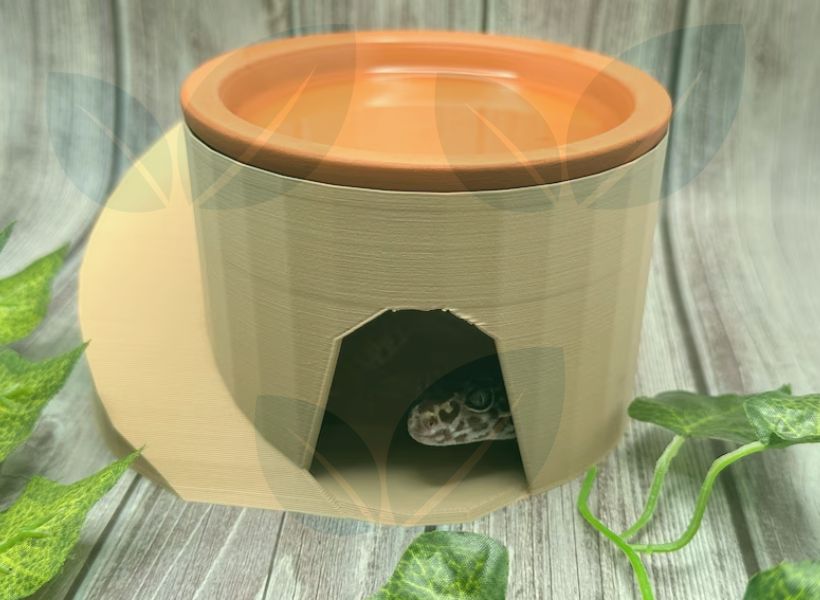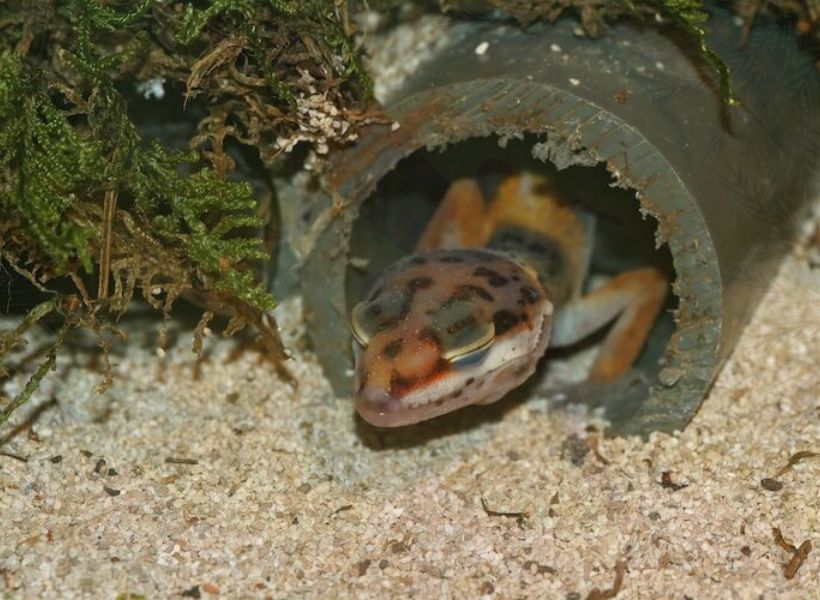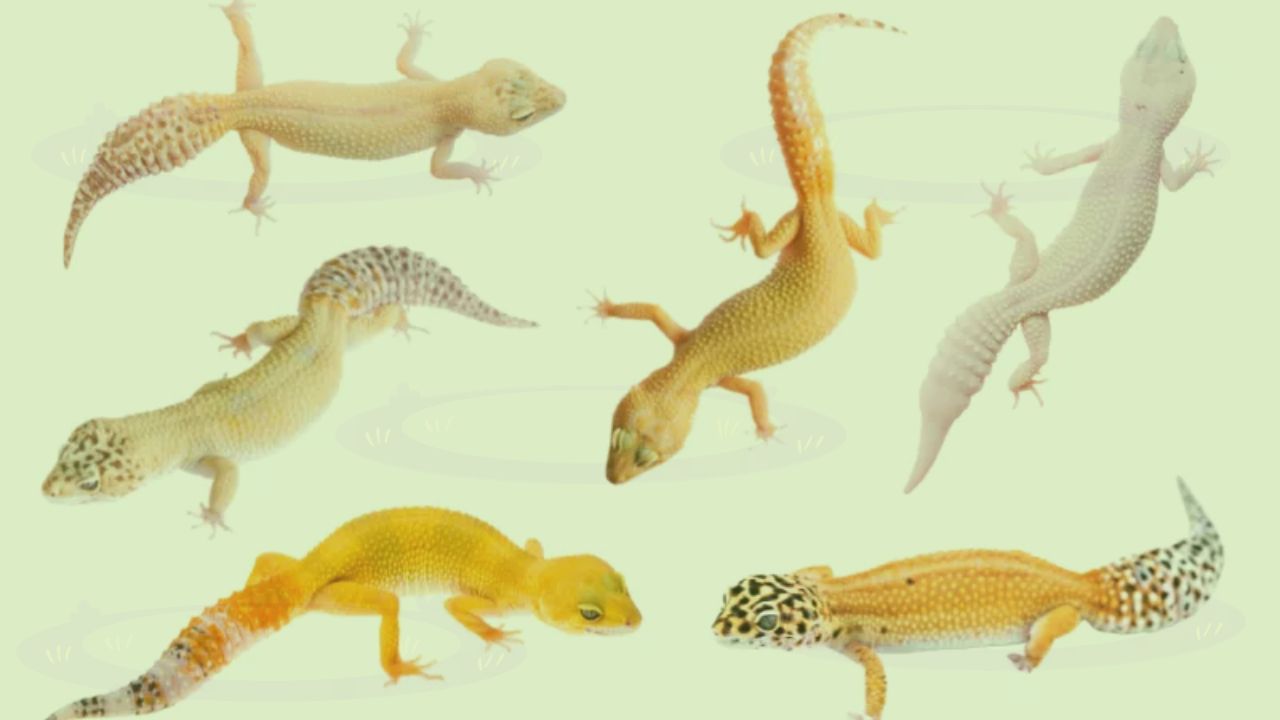As a leopard gecko owner, you know how important it is to provide your pet with a safe and comfortable habitat. One essential element of their enclosure is a moist hide. Leopard gecko moist hide is a shelter that provides humidity and moisture for your gecko.
Leopard geckos need a moist hide in their home for good health. This guide covers choosing materials, setting up, and maintaining them.
Learn how to make suitable moist hide and ensure your gecko’s well-being, including additional tips for overall health. Discover the ultimate care guide for your leopard gecko!
What is a leopard gecko’s moist hide? A leopard gecko’s moist hide is a cozy, damp shelter in their home. It helps them stay hydrated and aids in shedding their skin. Usually a small box with a moist substrate, it’s a vital spot for their well-being, ensuring they can comfortably regulate their humidity levels.

- Short Overview Of Leopard Gecko Moist Hide
- Leopard Gecko Humid Hide
- The Importance Of A Moist Hide For Leopard Geckos
- How To Set Up A Proper Moist Hide For Your Leopard Gecko
- Monitoring And Adjusting The Conditions Of The Moist Hide
- Proper Placement Of The Moist Hide Within The Enclosure
- How Often Should You Clean And Replace The Materials In The Moist Hide?
- Common Issues And Troubleshooting Tips For The Moist Hide Resolving Reptile Shed Issues
- Other Ways To Provide Moisture For Your Leopard Gecko’s Health Like Sphagnum Moss
- FAQ About Leopard Gecko Moist Hide
- Final Thought 💭
Short Overview Of Leopard Gecko Moist Hide
Creating a suitable moist hide for leopard geckos is vital in replicating their natural habitat. This space not only ensures the right humidity levels for shedding but also helps them maintain their body temperature.
As a rule of thumb, it provides a secure and humid environment, crucial for the overall well-being of your pet gecko.
Especially during shedding, a moisture-rich hide is a must to prevent dry environments and guarantee that your new pet stays healthy.
Remember, providing the right conditions and a safe resting place within the tank is essential for the health of your leopard gecko.
Best Moist Hide For Leopard Gecko: Diy Moist Hide For A Leopard
When creating a moist hide for your leopard gecko, consider using a plastic container with a damp paper towel or coconut shell. As well, a reptile cave, such as the Exo Terra gecko cave, can serve as an ideal moist hide for your pet.
Using moist substrate like sphagnum moss or coconut fiber can also help to create the perfect moist hide.
As a rule of thumb, ensure that the humidity level is appropriate within the rest of the tank, especially if you have a new pet leopard gecko. By following these guidelines, you can provide your pet with a comfortable and suitable moist hide.
Moist Shelter For Geckos
In dry environments, maintaining proper humidity levels for geckos is crucial. A moist shelter, like a humid hide, provides the required moisture, promoting natural behaviors.
Placing the moist hide on the warmer side of the tank offers necessary humidity while locating it on the cool side allows easy access to moisture.
Using a suitable substrate in the moist hide helps geckos feel safe and comfortable. This is especially important for new pets and bearded dragons, as they may have a hard time adjusting.
As a rule of thumb, keepers should ensure that the moist shelter adds to the rest of the tank’s environment.

Leopard Gecko Humid Hide
Creating a cozy home for your leopard gecko is essential, and the humid hide plays a crucial role.
This special hideout keeps the humidity just right for your gecko’s shredding needs. Simply place damp moss inside the hide, and watch your gecko happily retreat when it’s time to shed its skin.
A humid hide ensures a comfortable and stress-free environment for your scaly friend, promoting good health and a happy gecko!
Humid Hide For Gecko: Make A Humid Hide For A Leopard Gecko
Maintaining high humidity levels for geckos requires a properly set up humid hide on the cool side of the tank. Using damp paper towels or peat moss is the rule of thumb for creating an ideal leopard gecko humid hide.
Regularly monitoring the humidity level ensures it meets the gecko’s moisture requirements, promoting its well-being, especially during shedding.
A plastic container serves as a safe and humid refuge, offering the necessary moisture. The humid hide is crucial for the gecko’s health and comfort within the rest of the tank.
Leopard Gecko Hide: Hideout
The key to the well-being of your leopard gecko lies in providing a suitable hide, especially a moist one. By positioning the hide on the warm side of the tank, you create an ideal hiding spot with the necessary moisture.
Using the right substrate amplifies the enclosure environment, contributing to your gecko’s overall comfort. Placing the hide on the cool side offers a refreshing and moist refuge.
Remember, the rule of thumb is to prioritize your pet’s comfort and health by ensuring the hide meets their moisture and hiding needs.

The Importance Of A Moist Hide For Leopard Geckos
Mimicking the natural humid habitat of leopard geckos, a moist hide is crucial for their well-being. Without it, they may experience difficulties shedding, potentially leading to health issues.
As desert reptiles, they require the moisture provided by the hide for proper shedding and to regulate body temperature, minimizing stress living.
As a rule of thumb, monitoring and adjusting the conditions of the hide are essential for their care.
The rest of the tank should complement the moist hide, providing an optimal environment for your new pet. Leopard geckos would have a hard time thriving without this essential element in their enclosure.
Benefits Of Having A Moist Hide Dor Leopard Geckos
Providing a humid microclimate for shedding is crucial as it helps maintain proper humidity levels, facilitating the shedding process of leopard geckos.
Adequate moisture levels in the moist hide promote overall health and well-being by preventing dehydration and other health issues.
The moist hide encourages natural behaviors, offering leopard geckos a comfortable and secure space to hide and relax, reducing stress and aggression caused by improper environmental conditions.
Moreover, these hides are easy to set up and maintain, making them a practical addition to any leopard gecko enclosure.

How To Set Up A Proper Moist Hide For Your Leopard Gecko
Creating the ideal moist hide for your leopard gecko starts with choosing suitable materials and placing the hide on the warmer side of the tank to maintain proper humidity levels. Its also important to select the correct size of tank for your geckos.
Consistently monitoring and adjusting the moisture level ensures your pet’s well-being. Easy access and a secure, moist environment are vital in the hide, which should also utilize the best choice of substrate moistened appropriately.
Remember, as a new pet owner, following this rule of thumb will ensure your leopard gecko’s comfort and health.
Choosing The Right Materials For The Moist Hide
When it comes to choosing the right materials for the moist hide, several factors should be taken into account.
These include the size of the reptile and the placement of the hide within the enclosure. Materials such as sphagnum moss, coconut bedding, or damp paper towels can be used to create the moist hide, with proper substrate like coconut fiber being the best choice.
Using an appropriate container, such as a reptile cave or plastic container, ensures the effectiveness of the moist hide.
It’s important to ensure that the moist hide is spacious enough to comfortably accommodate the gecko, following the rule of thumb for creating a suitable environment for your pet.

Monitoring And Adjusting The Conditions Of The Moist Hide
Regularly checking the moisture level inside the moist hide is crucial for your leopard gecko’s well-being. Make adjustments to the humidity and temperature as needed to ensure the ideal environment for your pet.
By proactively monitoring and adjusting the conditions of the moist hide, you promote your gecko’s comfort and health within the enclosure.
Remember, as a rule of thumb, maintaining the humidity level that meets your leopard gecko’s requirements is vital for their overall health. When it comes to your new pet, bearded dragons, lizard vet advice is essential.
Maintaining The Humidity Levels In The Moist Hide
To maintain the humidity levels in the moist hide, it is essential to regularly check the moisture level to ensure adequate humidity.
Mist the sphagnum moss inside the hide regularly to keep it humid, adjusting the moisture level based on the gecko’s shedding cycle.
Use a humidity gauge to monitor and maintain the proper humidity level within the hide.
It’s crucial to ensure that the moist hide remains damp, not wet, to prevent mold and respiratory infections, following this as a rule of thumb to benefit your leopard gecko’s health and well-being.
Proper Placement Of The Moist Hide Within The Enclosure

Position the moist hide on the warmer side of the tank to maintain optimal moisture levels. It’s essential to place it in an easily accessible location so your leopard gecko can rest and spend a lot of time, ensuring convenience.
Besides, a moist hide can be utilized as a suitable location for a female leopard gecko to lay eggs, providing a safe and humid environment for the egg-laying process.
Keep the place to hide close to the water dish but away from the tank heater to prevent any temperature extremes.
Also, consider providing the option of placing the moist hide on the cooler side of the enclosure, giving the gecko a choice. Leave any sharp edges around the moist hide to prioritize your gecko’s safety.
How Often Should You Clean And Replace The Materials In The Moist Hide?
To maintain optimal hygiene, it is important to clean the moist hide, keep the substrate tidy, and replace the substrate every few days.
Use reptile-safe cleaning solutions for sanitization and replace the substrate immediately if mold or odor is present.
Consider the reptile’s size and moisture level when determining the cleaning frequency. Utilize appropriate substrates like peat moss or coconut fiber for the moist hide.
Cleaning And Maintaining The Moist Hide For Optimal Hygiene
Cleaning and maintaining the moist hide is crucial for your leopard gecko’s hygiene. When cleaning, use reptile-safe disinfectants to ensure optimal hygiene and safety.
Regularly remove any standing water or excessive moisture from the hide, focusing on proper substrate maintenance to avoid developing mold.
It’s a rule of thumb to keep the hide dry during the process, ensuring the reptile cave, mat, or coconut shell is also dry.
Always maintain the humidity level within the moist hide, providing your gecko with a comfortable and healthy environment. This maintenance doesn’t take a lot of time, but it greatly benefits your pet’s well-being.

Common Issues And Troubleshooting Tips For The Moist Hide Resolving Reptile Shed Issues
Having a hard time addressing mold issues in your leopard gecko’s moist hide? A rule of thumb is to replace or change the substrate and monitor the temperature, and humidity levels carefully.
Besides, if your gecko seems to avoid the moist hide, consider adjusting its temperature for a more favorable environment.
Remember that respiratory infections could stem from excessive humidity or the presence of mold, so keep an eye out for these issues.
Troubleshoot the placement of the moist hide as accessibility is key for your pet’s comfort and safety. Ensure shedding problems are resolved by maintaining appropriate moisture levels and selecting suitable substrates.
Other Ways To Provide Moisture For Your Leopard Gecko’s Health Like Sphagnum Moss
Offering a water dish is a crucial aspect of your gecko’s hydration. Keep the water level consistent to meet its needs.
Using a spray bottle to mist the enclosure creates the necessary humidity. Consider using coconut bedding, sphagnum moss, or specialized substrate to maintain moisture.
Setting up a separate humid hide is beneficial for regulating your gecko’s body temperature. Always monitor the humidity levels in the tank, ensuring your pet receives sufficient moisture without creating a damp environment.
FAQ About Leopard Gecko Moist Hide
Do Leopard Geckos Need A Moist Hide?
Leopard geckos do require a moist hide to help with shedding. It is important to use materials like sphagnum moss or vermiculite that retain moisture. Maintaining a humidity level of 80-90% inside the moist hide is crucial. Regular cleaning and substrate replacement prevent bacterial growth.
What Is The Best Moist Hide Substrate For Leopard Geckos?
The ideal substrate for leopard gecko’s moist hides is sphagnum moss or coconut fiber. Avoid using sand or gravel, as these can be harmful to your gecko. Ensure the substrate is moist but not too wet to prevent bacterial growth and also avoid it directly under any lights. Regularly clean and replace the substrate for proper hygiene.
How Do You Make A Moist Hide For Geckos?
To make a leopard gecko moist, use a plastic container with cut a hole for the gecko to enter and exit. Fill it with damp sphagnum moss or paper towels. Place the hide on the warm side of the tank to provide humidity for shedding.
What Is A Humid Hide?
A humid hide is an enclosure that helps maintain high moisture and humidity levels for leopard geckos. It aids in recovery problems shedding and should be made of moisture-retaining materials like sphagnum moss or coconut fiber. Regular cleaning and replacement are essential to prevent bacterial growth.
Why Does A Leopard Gecko Need A Moist Hide?
Leopard geckos need a moist hide to aid in shedding their skin. Without a proper moist hide, they may experience difficulties shedding and could develop skin problems. To make a moist hide for your leopard gecko, you can use a small plastic container filled with moistened moss or paper towels. Ensure the hide is placed on the cool side of the enclosure to maintain the appropriate humidity level.
Final Thought 💭
For properly ensure leo’s good health and well-being, a leopard gecko moist hide setup is crucial. It provides them with a safe and humid environment, which is necessary for shedding and maintaining hydration.
By choosing the right materials and monitoring the conditions, cutting an opening hole into an enclosure at least 2 times the size can ensure that your gecko has a comfortable and healthy space.
Remember to clean and replace the materials regularly to maintain optimal hygiene. If you encounter any issues or need troubleshooting tips, don’t hesitate to contact us for assistance.
We are here to help you provide the best care for your leopard gecko. Contact us today to learn more and ensure that your gecko stays happy and healthy!





Leave a Reply